
In May 2019 we took a 30 hour bus journey from Ecuador to Lima the capitol of Peru.

Our 30hr bus ride 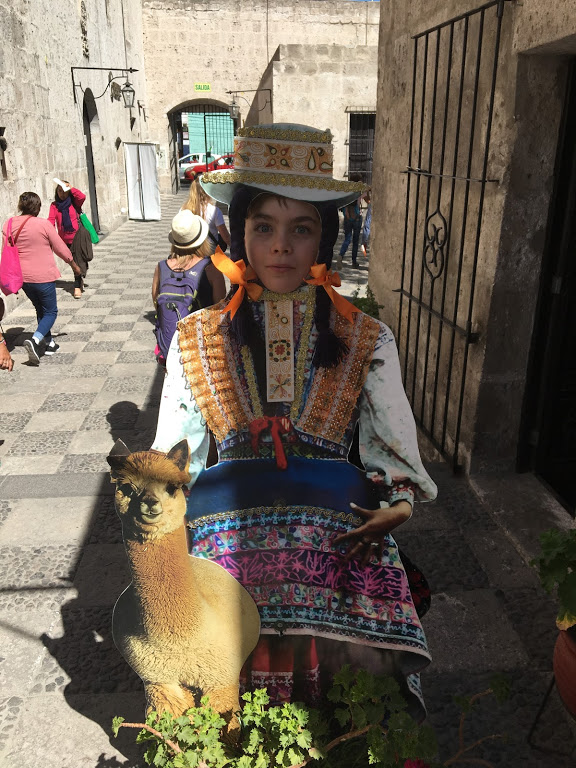
Welcome to Peru
On our first night in Lima we witnessed an earthquake which occurred up north in the jungle. The earthquake was 8 on the Richter scale. Luckily I slept through it so didn’t panic, but my parents woke up and said that the walls shook.
The following day we took a bus called Peru hop to Huacachina, which is a desert oasis and tiny village southwest of Peru. Here we got to go into the dunes on a dune buggy. It was so scary that I thought I would die or poo my pants, The driver would go up and down these massive dunes at full pace. He then took us to another spot where we could sand board – I loved this!
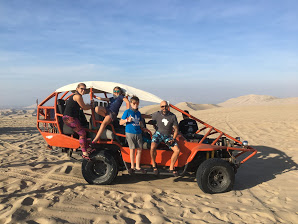
the wild dune buggy 
us sand boarding 
this is Huacachina 
getting ready
Peru Hop is a bus company that goes all the way through Peru and into Bolivia. It works in a hop on and hop off way, where you can choose to get off and stay for as long as you like then hop back on a bus at a scheduled time when you are ready to move on. Their was a fun guide on board who gave us interesting information along the way. There were lots of travelers and backpackers on this bus.
After two days in Huacachina, we hopped back on the bus which took us to Nazca. A long the way we stopped off at a viewing tower to see some of the Nazca lines. These are geoglyphs etched into the desert sands. Covering an area of nearly 1,000 sq. kilometers, there are about 300 different figures and we got to see three of them. The monkey, lizard and bird. They were discovered in 1939 and believed to have been made between the 200 BC- 600 AD by the Nazca people.
Our next stop was Cusco, we had booked a trek to Machu picchu and it was due to start here. That evening we had a briefing and met our guide and Phillis and David the other two hikers in our group. We were given a summary of what to expect and told to be ready for a 5 am pick up.

Phillis and David 
cusco 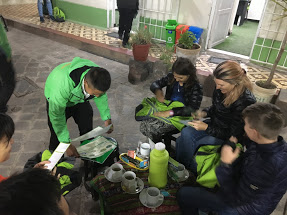
our long briefing
Early the next morning we we were picked up, our first stop was the Lares hot springs. We soaked in the hot water for about a hour before breakfast was made for us by the chef. It was really good. After this the walking began. most of the way was uphill and we passed many heards of alpacas and llamas. These are used by the native people for transporting their good (mainly potatoes). Alpacas are smaller and have a blunt face with short ears, while Llamas are the biggest lamoids and have more-elongated faces with banana-sized ears.

llamas and alpacas 
llama/alpaca 
the Baldeos 
walking to our camping point 
camping 
first breakfast 
having our short break
By early evening we reached our campsite where our tents were already set up. dinner was served and we were even given hot water bottles for bed- which was very good as it was freezing cold.
At 5am we were woken up with coco tea and warm water to wash outside our tents. After breakfast we set off, at first it was freezing until we got into the sun where the frost had started melting and I began to feel my toes again. After a lot of climbing in very high altitude we finally reached the Condor peak. There was beautiful lookout spot here and this is where David proposed to Phillis – she said Yes!!!
On our last day we were up early to catch the bus to entrence to Machu Pichu. We got in and managed to find a lovely spot for sunrise while our guide told us about the history of this amazing place.
Machu Picchu is the site of an ancient Inca city, high in the Andes of Peru. Located at 2430m, the site is often referred to as “The Lost City of the Incas”. It’s one of the most famous ruins in the world. A UNESCO World Heritage Site since 1983, Machu Picchu receives over one million visitors per year and is one of the New 7 Wonders of the World. It is believed that the Incas left this place to keep it hidden from the Spanish when they took over Peru.

llama selfie 1 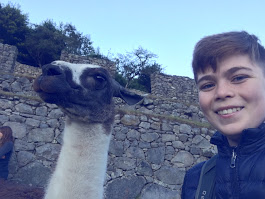
llama selfie 2
While our guide was talking, one of the local llama’s came up to me and farted.
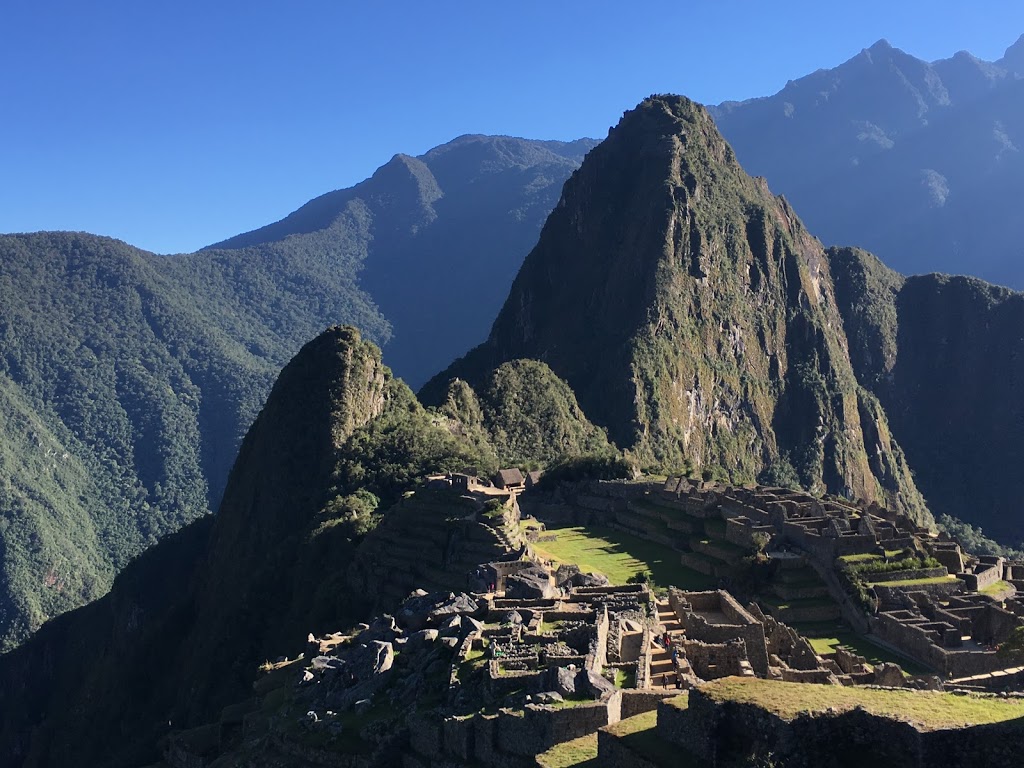
Machu 
Picchu
After spending a few hours at Machu Picchu, we made our way back to Cusco where we got on the bus to head to Bolivia.
On the way we stopped at lake Titicaca which borders Peru and Bolivia, it is the highest navigable lake in the world and is said to be the birthplace of the Incas.
To continue read my sisters blog of Bolivia and see what we do next
Ps: some interesting facts about Peru:
Did you know that Peru has 4000 different types of potatoes Paddington Bear originally came from Peru Peru is the third-largest country in South America

paddington 
inca ruins 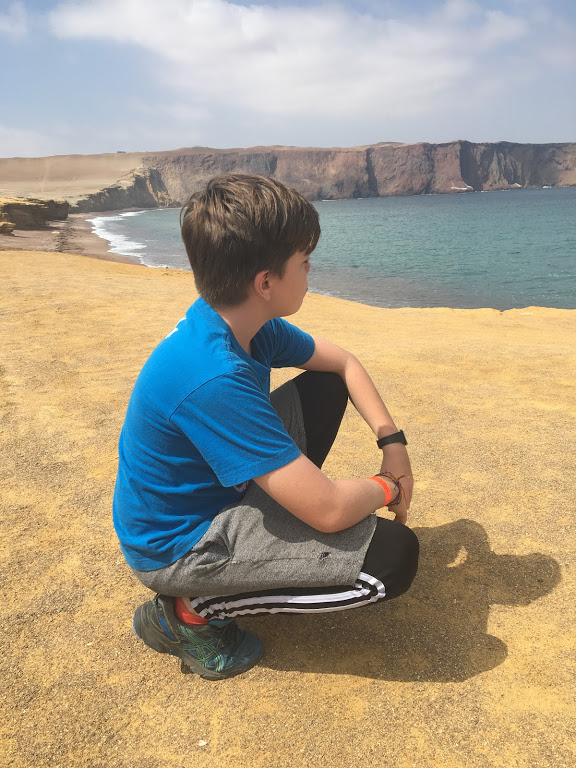
stunning view of the ocean 
beautiful sunset 
llama selfie in Machu Picchu 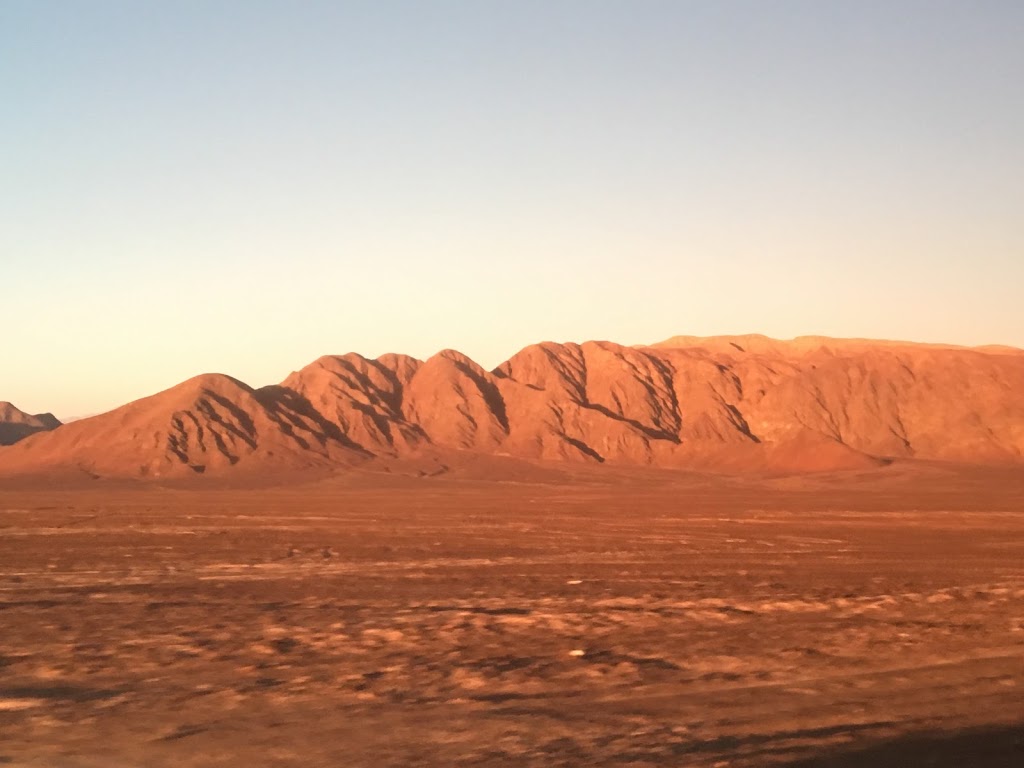
lovely view of the desert 
peru hop 
the hot springs 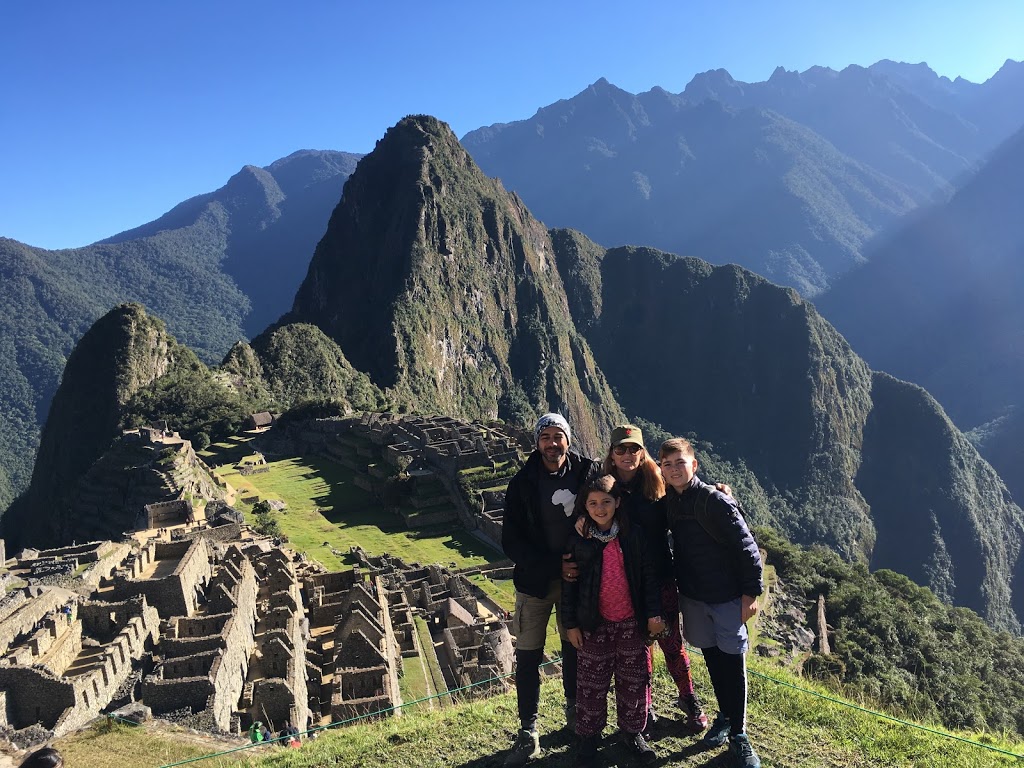
family photo in Machu Picchu

Variety of potatoes produced in Peru
By Rico

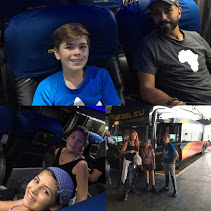

Very well written and presented. I look forward to your next account. 👍❤️
LikeLike
Very interesting and informative. Stunning photos. Keep it up Rico. I look forward to reading more.
LikeLike
Very well written Rico and informative the description is excellent superb photos keep up your good work.
LikeLike
Love reading your blog with my son
LikeLike